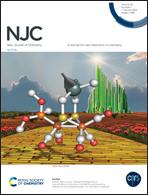DAP derived fatty acid amide organogelators as novel carrier for drug incorporation and pH-responsive release†
Abstract
Inflammation is associated with many different class of diseases and NSAIDs (non-steroidal anti-inflammatory drugs) are mostly preferred for long-term use. Although they are safe to use, some serious side effects are associated with these class of compounds; therefore, local drug delivery is an option to minimize the side effects. In this study, we have designed a new gel formulation for topical and transdermal applications of the NSAIDs with enhanced properties. For this purpose, low molecular mass DAP (2,6-diaminopyridine) derived fatty acid amides with varying alkyl chain lengths are synthesized. These fatty acid amides form stable self-assembled aggregates in organic solvents as well as in organic and aqueous solvent mixtures affording organogels and bigels, respectively. The minimum gelation concentration (MGC) of the organic gel is 0.5% w/v, which behaves as a super gelator. The various functionality present in the DAP-derived fatty acid amide gelators play an important role in the self-aggregation such as pyridine moiety stack through π–π and alkyl chain via van der Waals interactions resulting in the formation of stable organo and bigels network. The prepared organogel emulsions with these fatty acid amides are capable to encapsulate and release the drug molecule ibuprofen at room temperature without altering its structure and activity. Therefore, these analogues can be successfully utilized in pharmaceutical industries as a novel drug delivery carrier.



 Please wait while we load your content...
Please wait while we load your content...